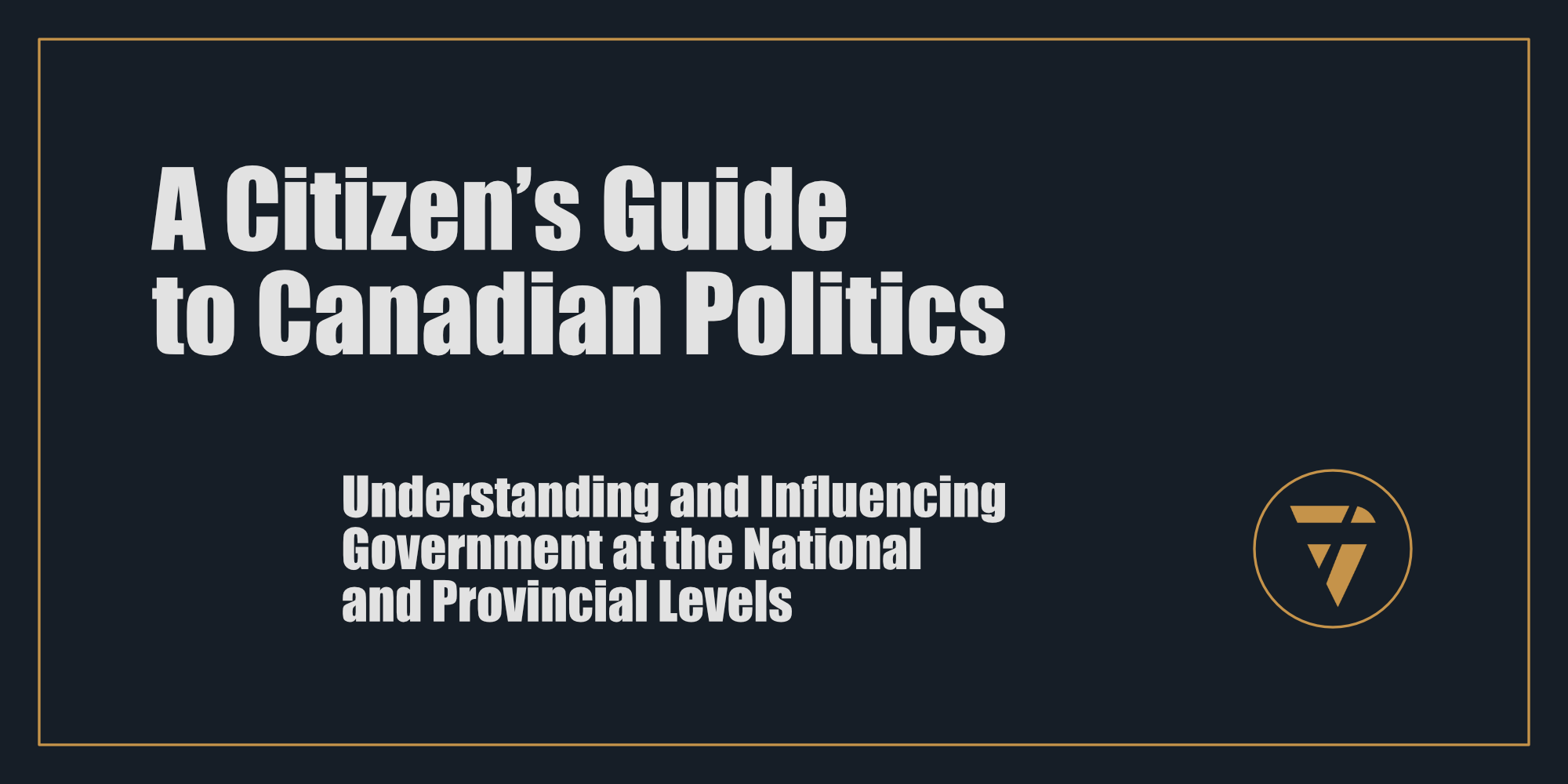A Citizen’s Guide to Canadian Politics

Understanding and Influencing Government at the National and Provincial Levels
Canada is often described as one of the world’s most stable and inclusive democracies, but how well do its citizens truly understand the mechanisms that shape their daily lives? Government is not a distant, abstract force. It's an active and direct influence on everything from healthcare and education, to infrastructure and taxation.
Too many Canadians remain disengaged from the political system that determines these crucial aspects of life. Voter turnout fluctuates, elections come and go, and policies are shaped with varying degrees of public input. Some citizens believe that politics is something that happens to them, rather than something they can shape. This guide exists to change that.
Why Understanding Politics Matters
Whether or not you actively participate in politics, politics participates in your life. The cost of groceries, the quality of your local schools, the air you breathe, and the security of your retirement savings—all are shaped by government policies. By choosing to be informed and engaged, you can influence decisions that affect your family, your community, and the future of the country.
When people say they don’t care about politics, they are effectively saying they are comfortable with others making decisions on their behalf—decisions that may not align with their needs or values. Political apathy is not a neutral stance; it's an endorsement of the status quo.
Instead of complaining and blaming, do something.
Help.
In contrast, an informed and engaged citizen is a powerful force for change. A voter who understands the political process, a community member who contacts their representatives, an activist who speaks out, or a future candidate who steps forward—these are the people who shape policy and hold leaders accountable.
This guide is designed to equip every Canadian with the knowledge and tools they need to take an active role in their democracy—whether that means voting with greater confidence, contacting their representatives, joining a political movement, or even running for office themselves.
The Structure of Canada’s Democracy
Canada is a constitutional monarchy and a parliamentary democracy. This means that while the country formally recognizes a monarch (King Charles III) as the head of state, real political power is exercised by elected officials within a parliamentary system. Unlike presidential systems like that of the United States, where the executive and legislative branches are separate, Canada’s system allows for a blending of these roles, making the government’s structure more fluid.
At the federal level, the Prime Minister and Cabinet wield significant authority, often more than the elected Members of Parliament (MPs) who are supposed to hold them accountable. Meanwhile, Canada’s provinces and territories operate as powerful entities in their own right, responsible for crucial sectors such as healthcare, education, and resource management.
For many, the complexity of this system can be overwhelming. What does a Member of Parliament actually do? How does a bill become law? What is the real function of the Senate? Why do some issues seem stuck in endless political debate while others pass quickly? This guide will demystify these processes, breaking down how each level of government operates and why it matters to you.
Beyond Elections: The Many Ways to Participate
Voting in elections is the most visible form of political participation, but it's far from the only one. The reality is that elections happen only every few years, but political decisions are made every single day. Citizens who engage between elections—by lobbying their representatives, joining advocacy groups, or speaking out on issues—wield far more influence than those who vote and disappear.
Imagine a scenario where a new policy threatens your community—perhaps a local hospital is closing, or a new tax disproportionately impacts small businesses. If you wait until the next election to voice your concerns, the damage may already be done. However, if you organize, petition, and put pressure on elected officials, you may influence decisions before they become irreversible.
Governments, at every level, respond to pressure from the public—especially when that pressure is consistent, organized, and well-articulated. This guide will teach you not only how to navigate elections but also how to make your voice heard year-round. From writing effective letters to MPs and MPPs, to using social media for activism, to understanding how public consultations work—this book provides practical strategies to ensure that your concerns translate into real political impact.
The Role of Political Parties and the Influence of Money
Many Canadians express frustration with partisan politics, feeling that elected officials are more loyal to their party than to the people they represent. Party discipline is a defining feature of Canadian politics, often leaving little room for individual MPs or MLAs to challenge their leaders. Understanding the role of parties—how they shape policy, how they select candidates, and how they control the political agenda—is crucial to making sense of our democracy.
Equally important is understanding how money influences decision-making. Political donations, corporate lobbying, and backroom deals can all shape policy in ways that are not always visible to the public. Who funds political campaigns? Who benefits from government contracts? Why do some policies get pushed forward while others are quietly abandoned? By examining these questions, the guide will help you recognize the forces at play behind the scenes—and how transparency and public pressure can counteract them.
The Future of Canadian Politics and Your Role in It
Canadian politics is constantly evolving. Issues such as climate change, Indigenous rights, wealth inequality, and electoral reform are shaping the debates of tomorrow. With shifting demographics, the rise of digital activism, and increasing global challenges, the future of Canadian governance will be determined by those who engage with it today.
The question is: will you be one of those people?
This is not just about understanding government—it’s about learning how to shape it. Whether you want to advocate for a cause, influence policy, or simply be a more informed voter, the knowledge within these pages will empower you to take action.
Your voice matters. Your participation matters. Your future—and the future of Canada—depends on it.
How to Use This Guide
Each chapter will explore a different aspect of Canada’s political system, from the Constitution and Charter of Rights and Freedoms to the mechanics of passing laws, the role of political parties, and the various ways you can engage with government. Whether you are a first-time voter or a seasoned political observer, this guide will provide valuable insights into how Canada’s democracy works—and how you can make it work for you.
Now, let’s begin.
This is what I’m working on. Tell me what you think, I enjoy the conversation! Subscribe and follow the work in real time.
Thanks!
B
Want to help shape what the guide needs? ben@proconsul.ca

Democracy isn’t passive. It’s a full-contact sport. Show up. Speak up. Push for the Canada you want to live in.
PS -






